Car, Truck/Utility Finalists Named
Filed under: Weekly test drives, Autos
By John Gilbert
The 2014 North American Car of the Year will be a near-exotic sports car, or a full-fledged sedan, with both costing up in the $60,000-$70,000 price range, or a high-economy compact sedan priced under $30,000 and closer to $20,000.
The Truck/Utility of the Year, similarly, will be either a luxury SUV in the over $50,000 category, a full-size pickup that can easily top $40,000, or a compact crossover with bold capability on and off road, priced well under $30,000.
All the preliminaries are settled, and the selection process to name the best for 2014 model year is speeding down the homestretch, so to speak. General Motors must be the numerical favorite with two of the three 2014 North American Car of the Year finalists, and it also has a major player in the companion North American Truck/Utility of the Year.
The Corvette Stingray is the redesigned sports car, and the Cadillac CTS sedan give GM two of the three finalists among cars, while the Chevrolet Silverado pickup gives GM one of the truck finalists. They are far from cinches, however, despite the continuing hopes for continuing success by GM.
The Corvette and the CTS both have a formidable contender in the Mazda3, a compact that costs half as much as either GM car and is capable of topping 40 miles per gallon with its holistic Skyactive engine-aerodynamic-design technology.
Same with the trucks, where the Silverado delivered on its long-awaited renovation, improving in every element of truck-building, and providing the tool needed to make up a clear deficit to rival pickups, but it faces a technically advanced Acura MDX as a thoroughly redesigned SUV, and a Jeep Cherokee compact crossover that is an entirely new vehicle with two new engines, dramatic styling, numerous high-tech features and a price that is about half the sticker of its two fellow finalists.
The jury of 50 auto journalists already has faced the pressure of reducing the original field down to workable groups of about a dozen each, then voted again to determine the top three vote-getting vehicles in each category to arrange the three finalists. The winners of the final vote will be announced at the Detroit International Auto Show in January.
Here’s a brief overview of the finalists, in alphabetical order:
Car of the Year
Cadillac CTS
The CTS and its hot-rod CTS-V model give Cadillac a solid footprint in the high-performing sporty sedan segment. With a front-engine/rear-drive layout, those in snowy regions would be wise to select the all-wheel-drive versions, which are available. The CTS4 comes with a turbocharged 2.0-liter 4-cylinder with 272 horsepower, while the standard CTS has the familiar 3.6-liter V6 with 321 horses, and the CTS V-Sport has the V6 with twin turbochargers producing 420 horsepower.
Main asset: The CTS is undoubtedly the best handling and best performing Cadillac ever, and it is aimed at challenging the mid-range sedans from BMW, Audi and Mercedes. Main limitation: Price point is also up there in BMW-Audi-Mercedes range.
Corvette Stingray
Redesigned body gives the Stingray a more exotic look, and the direct-injected power of 460 horsepower and 465 foot-pounds of torque from the revised 6.2-liter V8 are particularly appreciated with the 7-speed stick shift. The ‘Vette feels like a completely different — and mellower — performer with the automatic, almost like two different vehicles.
Main asset: Power, looks, handling and mid-20s mpg. Main limitation: A 2-seater may be a toy, but from $55,000-$75,000, it’s an expensive toy.
Mazda3
Mazda had to restrict the exhaust when it squeezed the first Skyactive engine into the existing Mazda3, while the new car has dramatic, eye-catching style and is designed around the full Skyactive treatment, with quick power and 40-plus mpg out of 13-1 compression ratio and regular gas. Mazda’s own manual and auto transmissions are slick 6-speeds, making the 155-hp 2.0 and the 185-hp 2.5 fours feel bigger than they are.
Main asset: A lot of style and technology in either sedan or hatch for under $30,000 and over 40 mpg. Main limitation: Perhaps none, for new benchmark in crowded compact segment.
Truck/Utility of the Year
Acura MDX
Third-generation of the larger of Acura’s two slick SUVs is bristling with technology, offering front-wheel or all-wheel versions with the 290-hp 3.5-liter V6, adding performance to a lighter and firmer MDX. Styling is highlighted by rows of bullet-shaped LEDs that serve as distinctive headlights. It challenges the class and tightness of the best German SUVs, with technical advancements that set new standards for any SUV.
Main asset: Performs beyond preconceived limits for family trucksters. Main limitation: Impressive technology comes at a price — think $50,000-plus.
Chevrolet Silverado
Changeover to all-new model is more than modest styling alterations suggest. It may not establish new benchmarks against Ford F150 or Ram, but it is clearly the best Chevy pickup ever. Nary an overhead camshaft among the 4.3 V6 (285 hp), 5.3 V8 (355 hp), or 6.2 V8 (420 hp), but Chevy engineers bring pushrods to life with direct injection and variable valve timing, and High Sierra model aims at the over-$45,000 bracket of luxury pickup buyers.
Main asset: Lighter but stronger frame, 6-speed auto may help approach highway EPA rating of 23 mpg. Main limitation: Best Chevy pickup ever still faces potent competition from upgraded Ram and F150.
Jeep Cherokee
Startling design makes all-new Cherokee different enough to be polarizing. First fwd platform for Jeep, with three different 4wd systems available. Console knob chooses auto/snow/sport/rock variations for new 2.4 MultiAir 4 (184 hp) or new 3.2 version of Pentastar V6 ((271 hp), and new ZF 9-speed transmission helps Cherokee conquer both extremes of Grand Cherokee on-road and Wrangler off-road.
Main asset: Great looks, interior, performance with 30-plus mpg capability, for $25,000-$30,000. Main limitation: Needs its agility so you can avoid owners of Liberty, Patriot and Compass, and maybe even Grand Cherokee and Wrangler; all will be bitterly envious.


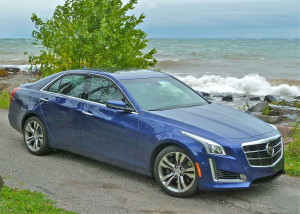
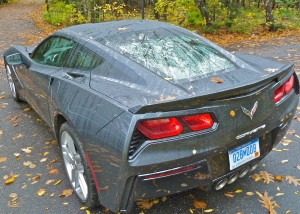
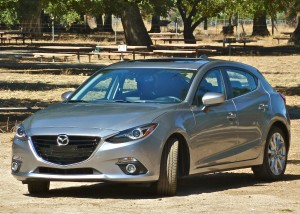
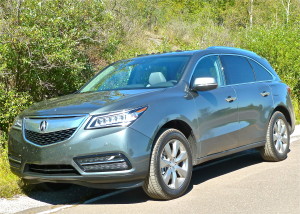
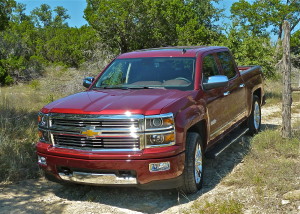
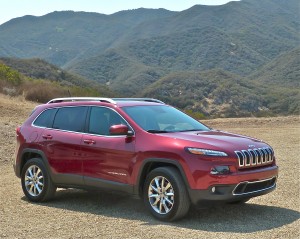
 John Gilbert is a lifetime Minnesotan and career journalist, specializing in cars and sports during and since spending 30 years at the Minneapolis Tribune, now the Star Tribune. More recently, he has continued translating the high-tech world of autos and sharing his passionate insights as a freelance writer/photographer/broadcaster. A member of the prestigious North American Car and Truck of the Year jury since 1993. John can be heard Monday-Friday from 9-11am on 610 KDAL(www.kdal610.com) on the "John Gilbert Show," and writes a column in the Duluth Reader.
John Gilbert is a lifetime Minnesotan and career journalist, specializing in cars and sports during and since spending 30 years at the Minneapolis Tribune, now the Star Tribune. More recently, he has continued translating the high-tech world of autos and sharing his passionate insights as a freelance writer/photographer/broadcaster. A member of the prestigious North American Car and Truck of the Year jury since 1993. John can be heard Monday-Friday from 9-11am on 610 KDAL(www.kdal610.com) on the "John Gilbert Show," and writes a column in the Duluth Reader.